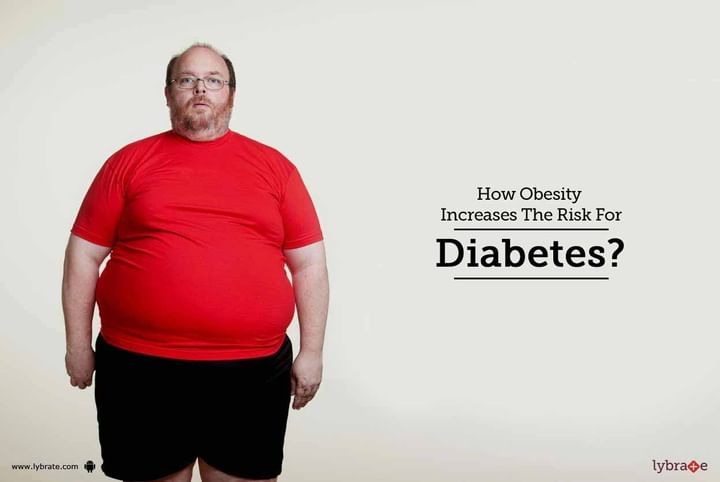How Obesity Increases The Risk For Diabetes?
Diabetes is a complex group of diseases with a variety of causes. People with diabetes have high blood glucose, also called high blood sugar or hyperglycemia.
Diabetes is a disorder of metabolism, the way the body uses digested food for energy. The digestive tract breaks down carbohydrates, sugars and starches found in many foods, into glucose, a form of sugar that enters the bloodstream. Diabetes develops when the body doesn't make enough insulin or is not able to use insulin effectively, or both.
The two main types of diabetes are:
Type 1 Diabetes: Type 1 diabetes typically occurs in children and young adults, though it can appear at any age. In the past, type 1 diabetes was called juvenile diabetes or insulin-dependent diabetes mellitus.
Heredity plays an important part in determining who is likely to develop type 1 diabetes. Genes are passed down from biological parent to child.
Type 2 Diabetes: Type 2 diabetes develops most often in middle-aged and older people who are also overweight or obese. The disease, once rare in youth, is becoming more common in overweight and obese children and adolescents. Type 2 diabetes is caused by a combination of factors, including insulin resistance, a condition in which the body's muscle, fat, and liver cells do not use insulin effectively.
Physical Inactivity, Obesity, and Diabetes-
Physical inactivity and obesity are strongly associated with the development of type 2 diabetes. People who are genetically susceptible to type 2 diabetes are more vulnerable when these risk factors are present. About 80 percent of people with type 2 diabetes are overweight or obese.
An imbalance between caloric intake and physical activity can lead to obesity, which causes insulin resistance and is common in people with type 2 diabetes. Central obesity, in which a person has excess abdominal fat, is a major risk factor not only for insulin resistance and type 2 diabetes but also for heart and blood vessel disease, also called cardiovascular disease (CVD). This excess belly fat produces hormones and other substances that can cause harmful, chronic effects in the body such as damage to blood vessels.
So, measuring your waist is a quick way of assessing your diabetes risk. This is a measure of abdominal obesity, which is a particularly high-risk form of obesity. Women have a higher risk of developing type 2 diabetes if their waist measures 80cm (31.5 inches) or more. Asian men with a waist size of 89cm (35 inches) or more have a higher risk, as do white or black men with a waist size of 94cm (37 inches) or more.
Simple Steps to Lower Your Risk-
Making a few lifestyle changes can dramatically lower the chances of developing type 2 diabetes. The same changes can also lower the chances of developing heart disease and other life taking cancers.
- Control Your Weight: Being overweight increases the chances of developing type 2 diabetes seven-fold. Being obese makes you 20 to 40 times more likely to develop diabetes than someone with a healthy weight. Losing weight can help if your weight is above the healthy-weight range. Check your BMI. Losing 7 to 10 percent of your current weight can cut your chances of developing type 2 diabetes in half.
- Get Moving and Turn Off the Television: Inactivity promotes type 2 diabetes. Working your muscles more often and making them work harder improves their ability to use insulin and absorb glucose. This puts less stress on your insulin-making cells.
- Tune Up Your Diet: Four dietary changes can have a big impact on the risk of type 2 diabetes-
If you are already suffering from diabetes, then do take a walk everyday and adopt healthy eating habits. Along with that relieve your stress and take proper doses of insulin or medications as prescribed by your doctor. In case you have a concern or query you can always consult an expert & get answers to your questions!



+1.svg)
